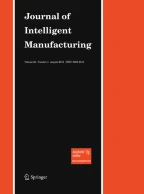Abstract
There are various surface defects which occur during the hot rolling of steels. It is difficult to correctly identify and control these defects due to the different inspection techniques on different materials and sizes. Also, the statistical data analysis techniques typically used like the principal component analysis, factor analysis etc. require a lot of plant data and are computationally very intensive. Before a detailed analysis of the actual cause of the defects can be done, it is necessary to separate the defects as those coming from the continuous casting or the rolling mill. Once this is done, analysis on the individual components can then be completed to find the root cause. To accomplish both these analysis, Bayesian hierarchical modeling is done on the automated inspection of the bars to form a causal relationship of the defects to the process equipments. Variance reduction model is used at the top of the analysis and regression models are used in the next level.
Similar content being viewed by others
References
Baskin, R. (1993). Investigation of variance components in the medical expenditure panel study. In ASA proceedings of the section of survey research, methods (pp. 808–813).
Beynon, J. H., & Krzyzanowski, M. (2008). Oxide scale behavior during thermomechanical processing. Materials forum, 29, 39–46.
Brimacombe, J. K. (1989). The challenge of quality in continuous casting processes. Metallurgical and Materials Transactions A, 30A, 1899–1912.
Chan, C.-L., Huang, H.-T., & You, H.-J. (2012). Intelligence modeling for coping strategies to reduce emergency department overcrowding in hospitals. Journal of Intelligent Manufacturing, 23(6), 2307–2318.
Chang, T. S. et al. (2001). Imaging based in-line surface defect inspection for bar rolling. AIST Iron & steel conference (pp. 20–31).
Choudhary, A. K., Harding, J. A., & Tiwari, M. K. (2008). Data mining in manufacturing: A review based on the kind of knowledge. Journal of Intelligent Manufacturing, 20, 501–521.
Colosimo, B., & Castillo, E. (2007). Bayesian process monitoring, control and optimization. London: Chapman & Hall.
Deming, W. E. (1975). On probability as a basis of action. The American Statistician, 29, 4.
Gelman, A., et al. (2004). Bayesian data analysis. London: Chapman & Hall.
Grill, A., Sorimachi, J., & Brimacombe, J. K. (1976). Cracking in continuous cast billets. Materials Transactions B, 7B, 177–189.
Huang, W., & Kovacevic, R. (2011). A neural network and multiple regression method for the characterization of the depth of weld penetration in laser welding based on acoustic signatures. Journal of Intelligent Manufacturing, 22, 131–143.
Ji, M., & Shivpuri, R. (2006). Reduction of random seams in hot rolling through FEM based sensitivity analysis. Materials Science and Engineering A, 425, 156–166.
Jin, N., Zhou, S., & Chang, T. S. (2002). Impacting factor identification of surface defects in hot rolling processes using multi-level regression analysis. Transactions of NAMRI/SME, 32, 557–564.
Jin, N., Li, J., & Shi, J. (2003). Quality prediction and control in rolling processes using logistic regression. Transactions of NAMRI/SME, 35, 113–120.
Li, J., Shi, J., & Chang, T.S (2007). On Line Seam Detection in rolling processes using snake projection and discrete wavelet transform. Transactions of ASME, 129.
Li, T. S., Huang, C. L., & Wu, Z. Y. (2006). Data mining using genetic programming for construction of a semiconductor manufacturing yield rate prediction system. Journal of Intelligent Manufacturing, 17, 355–361.
Ouchi, C., & Matsumoto, K. (1982). Hot ductility in Nb-bearing high strength low alloy steels. Transactions on ISIJ, 22, 181–189.
R Development Core Team (2008). R: A language and environment for statistical computing. Vienna, Austria: R Foundation for Statistical Computing. ISBN 3-900051-07-0, URL http://www.R-project.org.
Rickli, J. L., Camelio, J. A., Dreyer, J. T., & Pandit, S. M. (2011). Fault detection and prognosis of assembly locating systems using piezoelectric transducers. Journal of Intelligent Manufacturing, 22, 909–918.
Yeh, D. Y., Cheng, C. H., & Hsiao, S. C. (2011). Classification knowledge discovery in mold tooling test using decision tree algorithm. Journal of Intelligent Manufacturing, 22, 585–595.
Acknowledgments
The authors would like to thank all the people associated with the data collection. The authors would also like to thank Dr. Prem Goel (Dept. of Statistics, OSU) for his insight into the Bayesian modeling. The research was carried out as a part of NSF STTR project RIE (IIP-0646502).
Author information
Authors and Affiliations
Corresponding author
Rights and permissions
About this article
Cite this article
Agarwal, K., Shivpuri, R. Knowledge discovery in steel bar rolling mills using scheduling data and automated inspection. J Intell Manuf 25, 1289–1299 (2014). https://doi.org/10.1007/s10845-013-0730-5
Received:
Accepted:
Published:
Issue Date:
DOI: https://doi.org/10.1007/s10845-013-0730-5
